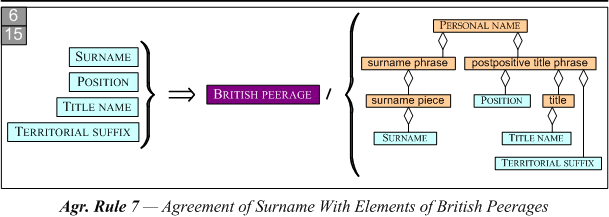1.7 Structure of the postpositive title. The postpositive title consists of those elements of the personal name that follow the given name and/or surname. When we discussed the prepositive title, we mentioned the possible co-occurrence of certain parts of both titles. There were certain examples (7) – (9) given there some of which are here repeated as (1) – (3).
| (1) | a. | Sir Thomas Scott, Knight | |
| (2) | a. | His Royal Majesty King George the second, King of Great Britain | |
| (3) | a. | Her Excellency the Right Honorable Mary Smith, British Ambassador | |
| b. | The Honorable John Smith, American Minister |
The examples illustrate how the comma appears to set off the postpositive title phrase. In the case where there is an ordinal numeral, the comma follows it. Examples might be multiplied.
| (1) | a. | Sir Thomas Scott, Knight | |
| b. | Sir Thomas Scott, Knight of the Garter | ||
| c. | Sir Thomas Scott, Knight Baronet | ||
| (2) | a. | His Royal Majesty King George the second, King of Great Britain | |
| b. | King Henry VIII, King of England | ||
| (3) | a. | Her Excellency the Right Honorable Mary Smith, British Ambassador | |
| b. | The Honorable John Smith, American Minister |
There seem to be several distinct kinds of postpositive titles (Merriam-Webster: pp. 1556ff). The most straight-forward may be the so-called postnominal initials:
| (4) | a. | Brother James, S.J. | |
| b. | Rabbi John R. Smith, D.D. | ||
| c. | Sister Mary Angelica, S.C. |
These may interact with certain other postpositive titles:
| (5) | a. | Reverend Mary Angelica, Mother Superior, S.C. | |
| b. | Doctor John R. Smith, Jr., M.D. | ||
| c. | John R. Smith, III, M.D., Ph. D. |
After a comma there appears to be a possible indication of rank and/or a comparative adjective. These are possibly followed by the appropriate initials indicating some degree of professional attainment, of which there may be multiple. For these we add PS rule [PS14].
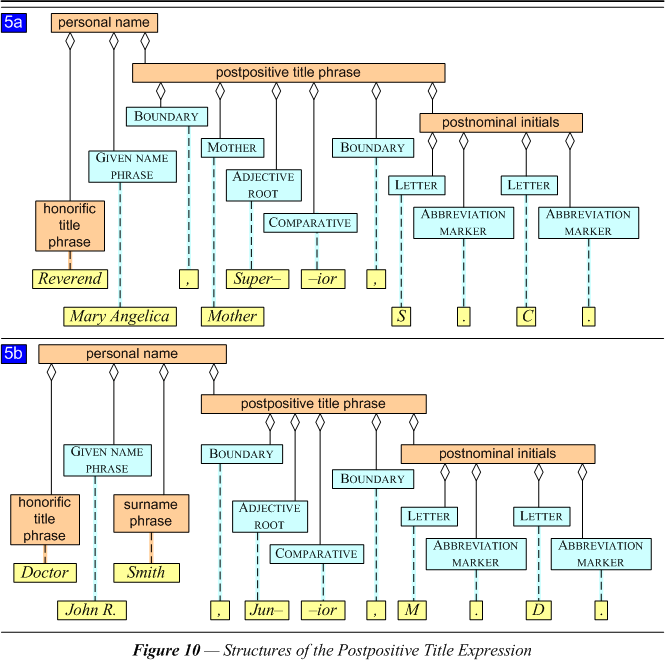


It is also possible that an ordinal number in the form of a Roman numeral be used as a distinguisher in place of the comparative adjective by subsequent generations carrying the same name.

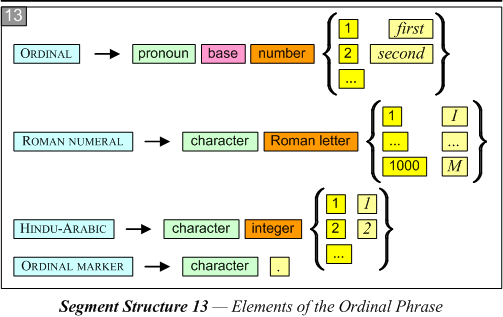
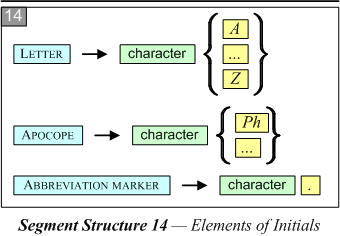
The British royalty and peerage have a differently organized additional system of postpositive titles:
| (6) | a. | Francis Fortescue, Baron Clinton | |
| b. | Donald Clifton-Hastings-Campbell, Baron Donington | ||
| c. | James Clive, Baron Herbert of Chirbury | ||
| d. | Alexander Campbell, Laird of Inveraray, Mull, Morvern & Tiry | ||
| e. | Walter Clifford the second, Baron de Clifford | ||
| f. | Thomas Howard IV, Earl of Berkshire | ||
| g. | Elizabeth Villiers, Duchess of Cleveland | ||
| h. | Henry III, King of England |
There are various peerage ranks and when the ordinal phrase is used, such as, “the third,” it indicates the third person in line bearing the name, not the third person in line bearing the title. (The European custom is otherwise.) The description of the peerage forms is found as the lower option of PS rule [PS12]. To this is added the title name and territorial suffix (where applicable) in PS rule [PS15].
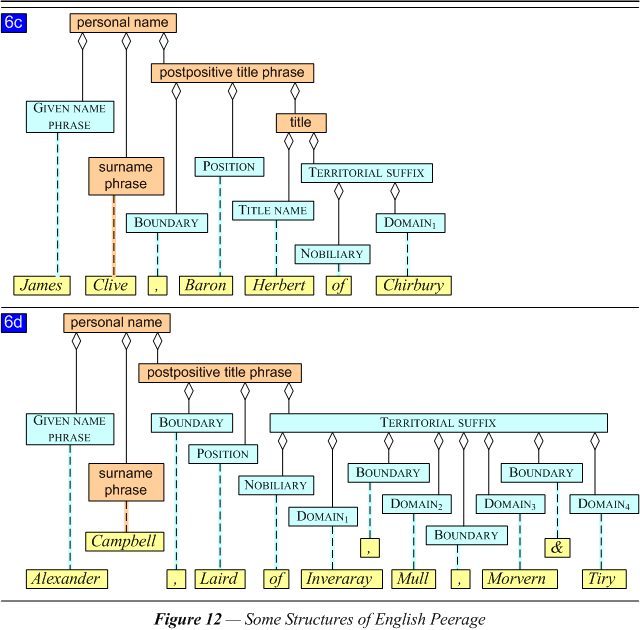
The agreement of the surname with the elements of the British Peerages is not as simple as the agreement of elements in the previously given agreement rules. In order to state these rules it is necessary to make reference to the specific peerage connected to the particular individual who owned it. This will require the services of another authority system. The analysis shown of the territorial suffix in figure 12 takes advantage of the rules of that system. We indicate this in general by using a violet colored box. We will describe the attributes of the various elements of that authority in a following section.
